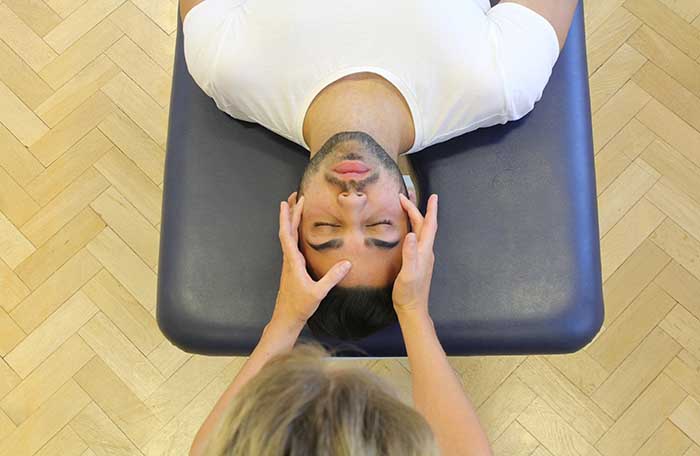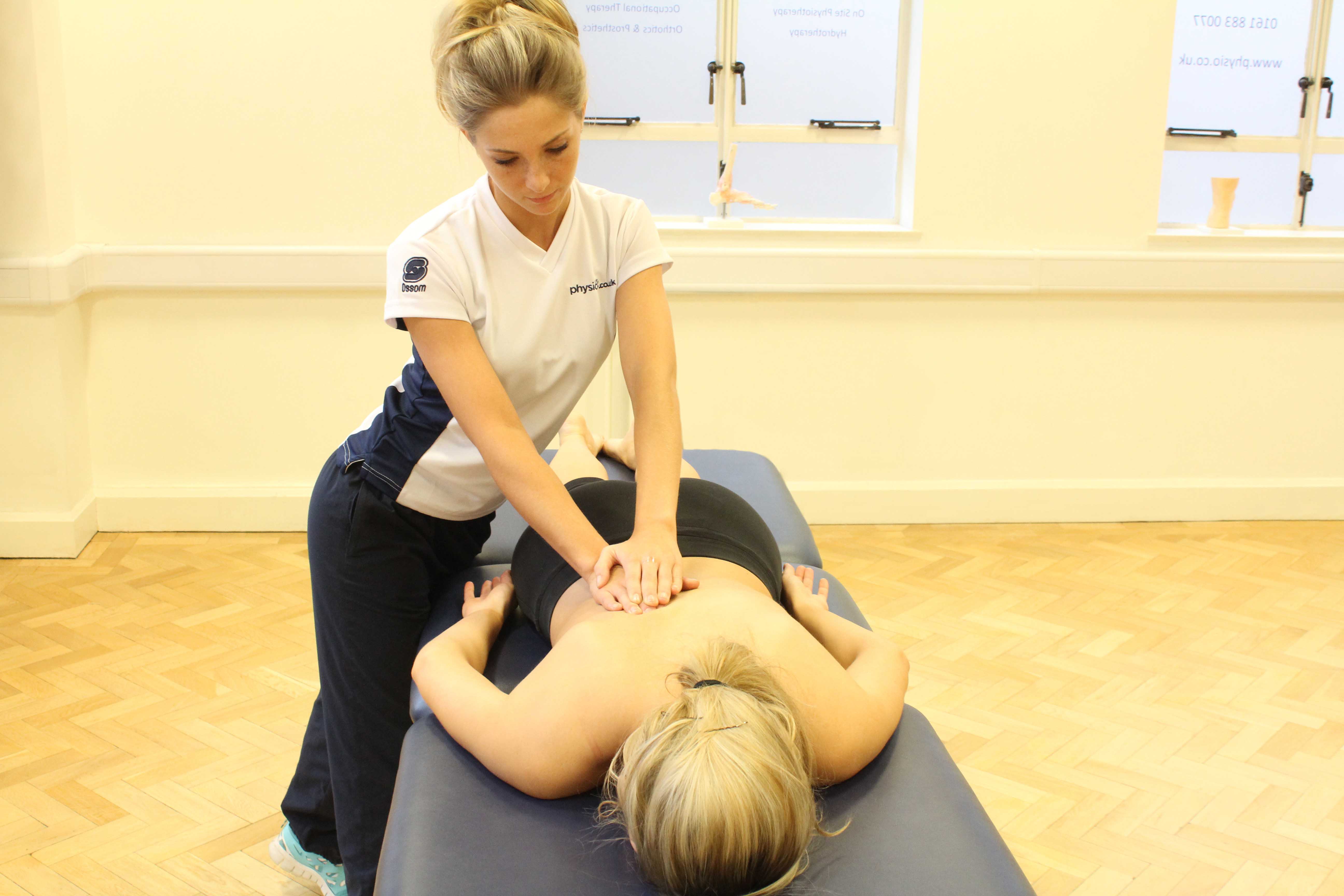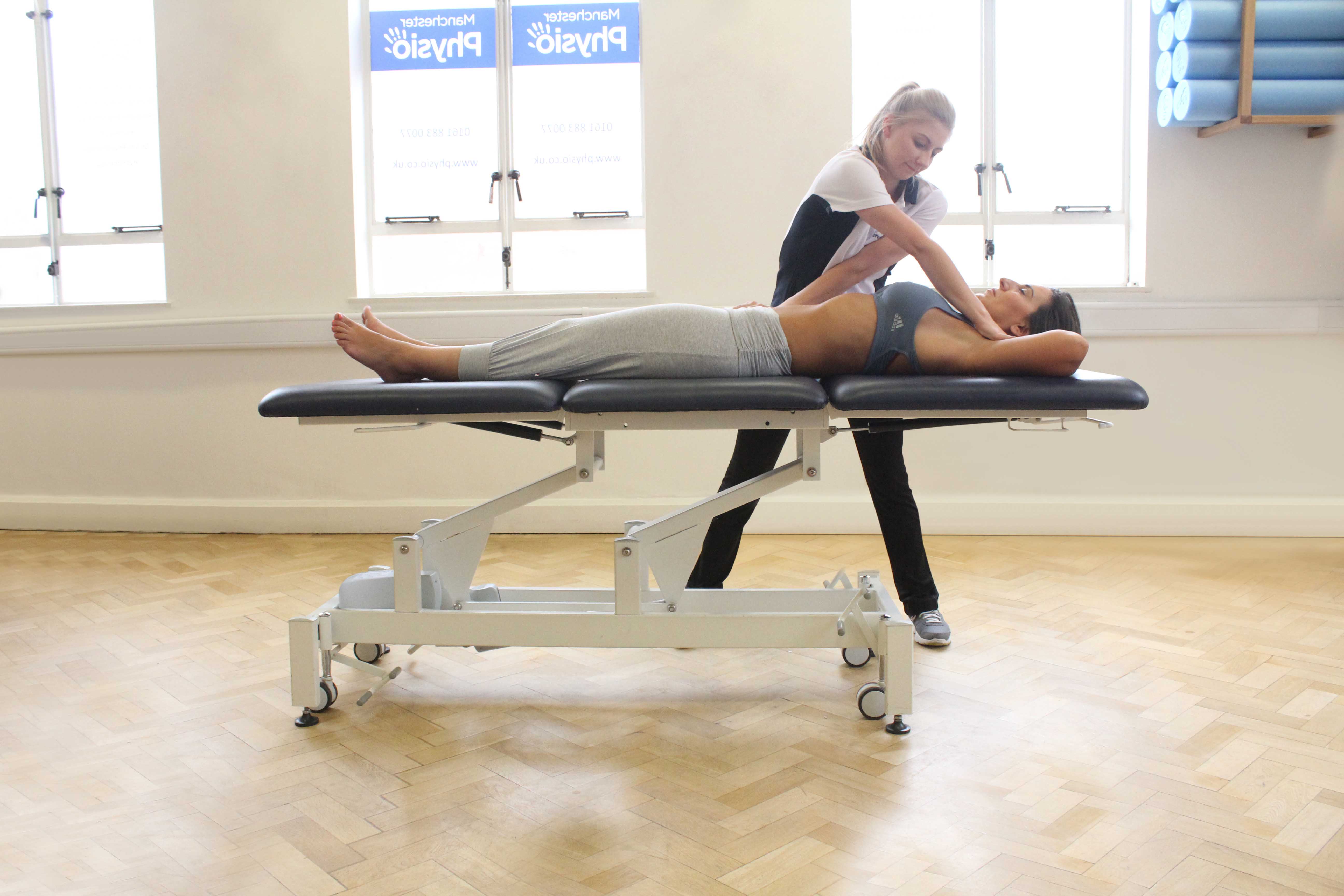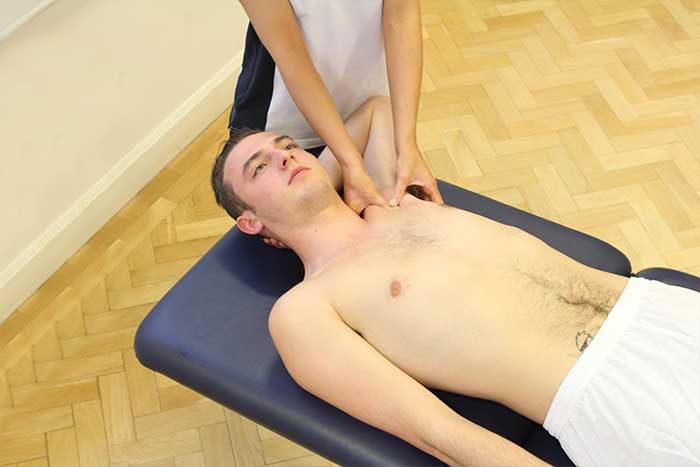A therapeutic massage aims to promote relaxation and promote wellbeing. Therapeutic massage is an effective massage type that stimulates the skin and nervous system reducing emotional and physical stress. Therapeutic massages can have many benefits. Therapeutic massages helps promote general health, promote relaxation and reduce tension related to emotional stress. A therapeutic massage can stimulate a sense of calmness and well-being by increasing feel good hormones. Therapeutic massage can be used on regular basis to maintain relaxation and healthy muscle condition. Massage therapists at Physio.co.uk can use therapeutic massage as an effective treatment to benefit many conditions.
What is a therapeutic massage?
Therapeutic massage is a mobilisation of the soft tissues in order to induce relaxation. Therapeutic massage uses a combination of specific massage techniques to produce a therapeutic effect. Therapeutic massage can be used to reduce stress, decrease pain and increase feeling of calmness and well-being. Therapeutic massage can also produce many physiological effects, which benefit the body. Physiological effects such as reduced heart rate, increased blood circulation, increased temperature and stimulation of sensory receptors. Techniques used within a therapeutic massage can also help to stretch and loosen soft tissues allowing more movement around joints.

What techniques are used in a therapeutic massage?
At Physio.co.uk our massage therapists are experienced with a wide range of massage techniques. Common massage techniques used during a therapeutic massage include:
 Above: Therapeutic massage focusing on laissimus and rhomboid muscles
Above: Therapeutic massage focusing on laissimus and rhomboid musclesEffleurage in a therapeutic massage is a stroking movement usually performed from the bottom to the top of a body part. Pressure can be adjusted to the desired outcome of the treatment. Effleurage is used during a therapeutic massage to increase blood flow, accelerate lymphatic drainage and increase temperature of soft tissues.
Kneading is a common massage technique used in a therapeutic massage. Kneading can be performed to treat muscular conditions or to give a pure relaxation effect. During the kneading technique tissues are compressed and manipulated. Kneading can be performed in circular movements to many areas of the body. Kneading stimulates venous return, increases mobility of tissues and helps cellular exchange.
Lymphatic drainage is a massage technique performed in many types of massage. Lymphatic drainage is used in a therapeutic massage that can have a therapeutic effect as well as aiming to stimulate the lymphatic system. The lymphatic system gets rid of toxins in the body and helps remove swelling and excess fluids.
Picking up is a specific technique where tissues are compressed, lifted, squeezed and then released. Picking up aims to mobilise soft tissues and is especially effective when used alongside other techniques.
Skin rolling is performed in a therapeutic massage with both hands across soft tissues. Rolling helps to mobilise restricted tissue and scar tissue. Skin rolling increases temperature and helps stretch out fibrous tissues.
What are the physiological effects of a therapeutic massage?
During a therapeutic massage there are many physiological effects. The physiological effects of a therapeutic massage include:
- Reduces heart rate
- Improved circulation
- Increased Temperature
- Stimulates sensory receptors
 Above: Therapeutic massage focused on biceps femoris and vastus lateralis
Above: Therapeutic massage focused on biceps femoris and vastus lateralisA therapeutic massage lowers the heart rate. Therapeutic massage can decrease blood pressure as well as reducing hormones in the body that can cause stress. Elevated heart rate can put you at higher risks of serious illnesses. During a therapeutic massage muscles are relaxed and venous blood is pushed towards the heart, easing strain.
Therapeutic massage allows the blood to circulate more efficiently. Improved blood circulation keeps the muscles functioning and can prevent lactic acid build up in the blood stream. More blood circulation delivers oxygenated blood to the entire body and assists in repair of damaged tissues.
A therapeutic massage increases temperature in the soft tissues. Increased temperature stimulates a relaxation response. A relaxation response in the body produces inhibitory messages from the nervous system. Inhibitory messages produce an opposite effect from excitatory messages. Inhibitory messages send relaxing messages to the muscles therefore relax and reduce tension.
Therapeutic massage also stimulates the sensory receptors. Massage can stimulate nerves or soothe them depending on the technique. Therapeutic massage uses specific techniques to stimulate the parasympathetic nervous system. The parasympathetic nervous system helps encourage relaxation and reduce stress levels.

What are the benefits of a therapeutic massage?
Therapeutic massages have many benefits. The benefits of a therapeutic massage include:
A therapeutic massage is beneficial to relieving stress. Stress can be part of everyday life. A build-up of the 'stress hormone" cortisol, can lead to physical symptoms including headaches, elevated blood pressure and to sleeping problems. Stress relief is one of the first benefits that come from a therapeutic massage. Massage is shown to decrease cortisol, lower heart rate, reduce blood pressure and relax muscles. Serotonin and dopamine are also released through massage that results in a feeling of calmness and relaxation.
Therapeutic massage is the most effective type of massage to promote relaxation. A therapeutic massage creates a relaxation response in the body. The relaxation response is the state in which the heart rate slows and blood pressure goes down. The production of stress hormones also decrease as feel good hormones are released. Feel good hormones such as endorphins, serotonin and dopamine positively affect emotions and promote calm and relaxation.
Therapeutic massages can help improve circulation in the body. Poor blood circulation can create fatigue, achiness and decrease body temperature. Massage facilitates circulation from the pressure created by specific massage techniques. Massage helps move blood through congested areas and helps the release of new blood flow in. Squeezing and pulling techniques flushes waste products out from the muscles and improve lymph circulation.
A therapeutic massage is also a beneficial treatment for maintaining flexibility and improving range of motion. Massage treats muscles, connective tissue, tendons and ligaments and helps maintain flexibility by keeping fluid within the joints and making them less prone to injury.
A therapeutic massage can help improve posture. Posture is referred to the natural positioning of the body. Massage can help relax and loosen muscles made sore by bad posture, allowing your body to position in a natural and pain free posture. With regular massage treatment muscles are loosened, joints have a greater range of movement and pressure points are relieved.
Summary
A therapeutic massage is used to stimulate relaxation. Therapeutic massage can be used to reduce stress, improve blood circulation and reduce pain. There are many techniques used in a therapeutic massage including effleurage, kneading, lymphatic drainage, picking up and skin rolling. Therapeutic massages can be used on a regular basis to help reduce emotions such as stress, anxiety and depression and also contribute to maintaining healthy muscles.
To arrange a therapeutic massage at Physio.co.uk please e-mail us at office@physio.co.uk or call us on 0800 033 7800.
How can I arrange a therapeutic massage?
The easiest way to arrange a therapeutic massage at Physio.co.uk is to email us at office@physio.co.uk or call us on 0800 033 7800.
Alternatively if you have any questions please feel free to contact us.
We offer a 7 day service and provide home and clinic appointments.

 0330 088 7800
0330 088 7800


































